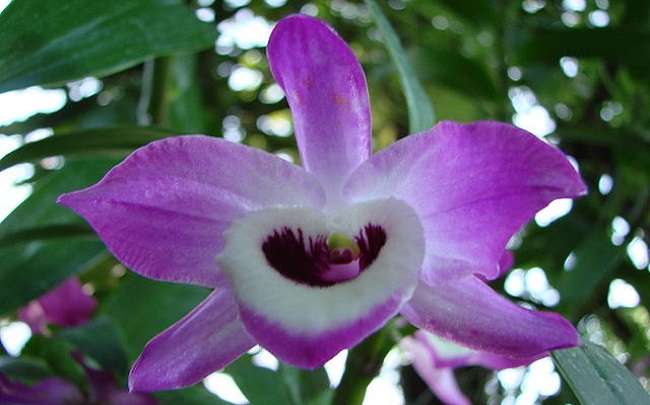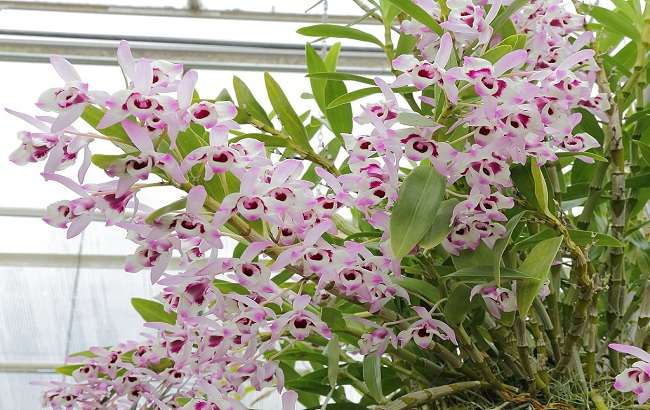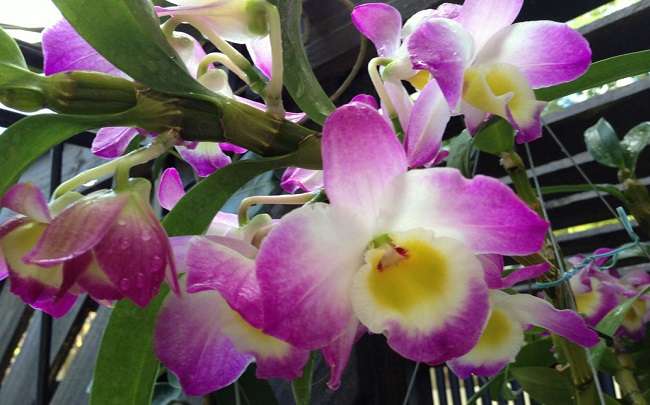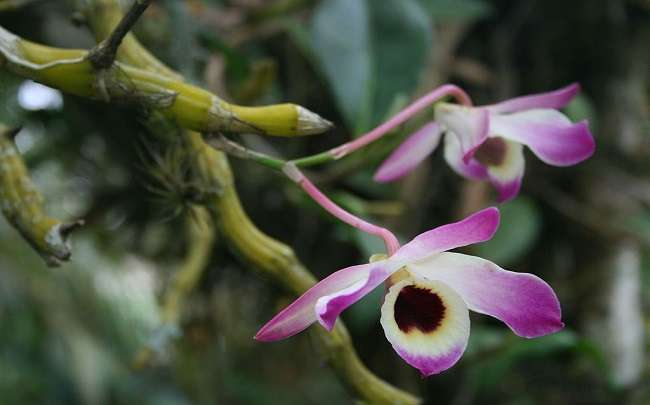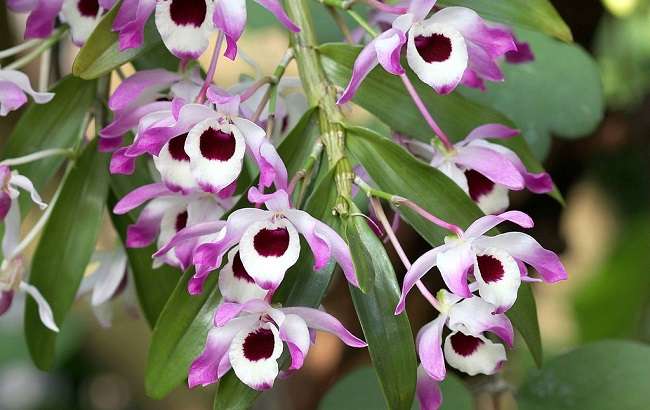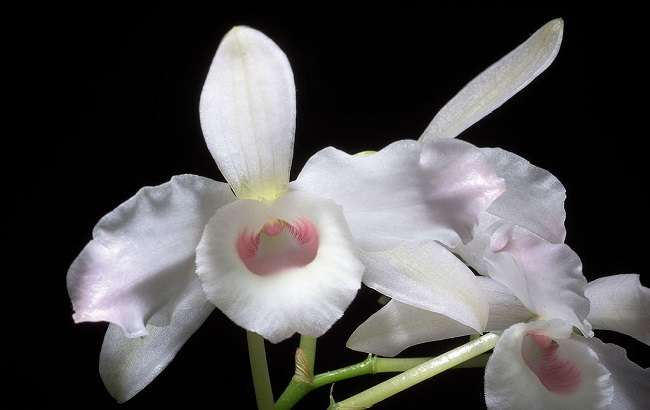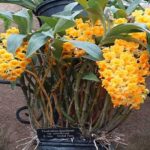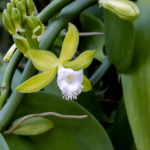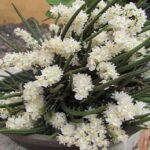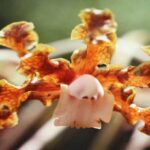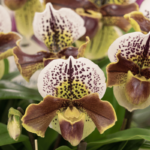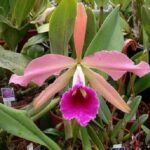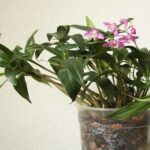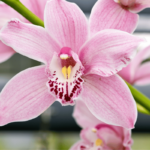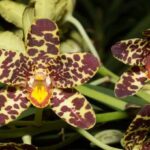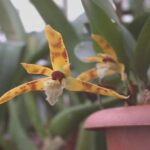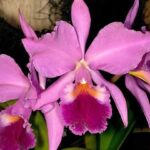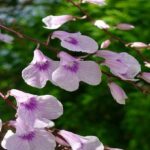The dendrobium nobile is also known as the noble dendrobium.
This plant belongs to the dendrobium genus, one of the largest orchid genera with about 1510 species.
This is an epiphytic orchid that can be found in Asia, especially in the following countries:
- China
- India
- Thailand
- Bhutan
- Laos
- Vietnam
- Burma
Continue reading to discover the main characteristics, curiosities and cultivation tips about one of the most famous orchid species among growers, the dendrobium nobile.
Learn How to Achieve Super Blooms on Your Orchids
🛑 If you love orchids and you're tired of not being able to make them bloom...
Then, know that thousands of beginner growers are achieving beautiful flowers on their orchids by following this method.
Click the button below to have beautiful orchids with show-worthy flowers every year. ⤵
Characteristics of the Dendrobium Nobile
Commonly used in hybridization, the Dendrobium nobile can be found in a wide range of elevations, from 20 to 2000 meters (65,6 to 6561 feet) above sea level.
Thanks to this large number of hybrids, the den. nobile has gained worldwide fame.
Today, we can find extremely resilient species with wonderful flowering.
This is an orchid that can vary greatly in size. While some hybrids reach up to 40cm (15,7 inches) in height, others can exceed 1.5 meters (59 inches).
Curiosities
Being so famous, the Dendrobium nobile has some little-known but interesting curiosities:
- It is considered the flower symbol of the state of Sikkim (an independent kingdom that was incorporated into India)
- It is one of the 50 herbs in Chinese medicine, known in the country as Shi Hu Lan
- Its name is a Latin epithet meaning remarkable
- Many consider it the most famous orchid
- You can get up to 100 flowers during the flowering of this species.
Know any more interesting facts? Leave them in the comments.
Flowers
They are the flowers that generated one of its most famous nicknames, doll’s eye orchid.
In English, few growers call Dendrobium Nobile the Doll’s Eye orchid, but in Portuguese and Spanish, this nickname is very common.
Blooming between spring and summer, this orchid produces very beautiful and numerous flowers.
These flowers can have various colors, such as:
- White with pink edges and a yellow or brown center.
- Completely white
- Lilac
- Yellow
The flowering lasts an average of 30 days, and each flower is about 6cm in length with a slight fragrance.
This orchid requires a decrease in temperature and watering for a successful flowering. Experienced cultivators can get 100 flowers or more during flowering.
ATTENTION: never cut the old bulbs because the new flowers sprout from them; new bulbs do not bloom in the first year.
Caring for the Dendrobium Nobile
Undoubtedly, this is one of the easiest orchids to care for. If you’re a beginner orchid enthusiast, this is one of the ideal orchids to start with. Other options include:
The significant difference with the dendrobium nobile is that it is highly resistant to temperature variations (even extreme ones). See below for the main factors in cultivating it.
Lighting and Ventilation
Let’s start with the simplest factors for this orchid, lighting, and ventilation.
The Dendrobium nobile likes a lot of light and excellent ventilation.
Therefore, the tips below will help you:
- Cooler locations: place it outdoors in direct sunlight
- Apartment: place it in a window where it receives plenty of sunlight
- Warmer locations: provide 30% shading
- Very cold locations: bring it indoors to temperatures that may freeze your orchid.
A tip is to observe the color of your orchid’s leaves. If they turn yellow, you are providing excessive light, and if they are dark green, it needs more light.
Watering
When it comes to watering, it should be frequent, but it’s essential to let the soil dry.
Since this is an orchid that prefers medium humidity, watering once a week in colder times and twice a week in warmer times is ideal.
To know when the soil is dry, follow this tip:
- Use a pencil
- Place it in the middle of the potting mix
- If the tip changes color, it is still wet.
Remember that drier times, with a lot of ventilation and warmer conditions, increase the frequency of watering.
An interesting fact is that you can reduce watering in this orchid. Basically, this technique is used to make your dendrobium bloom more.
Fertilization
Fertilization is crucial for your orchid to have the energy to grow and bloom.
But before fertilizing the dendrobium nobile, it is important to water it a day before. This will prevent you from burning the roots of this orchid.
NOTE: if you reduce watering, do not fertilize during this period.
Recommended fertilizers for the Dendrobium nobile are:
- NPK 10 10 10 with monthly fertilization
- NPK 4 14 8 use this formulation just before flowering
Also, avoid fertilizing your orchid during flowering, as this can burn the flowers. As for organic fertilizers, the recommended ones are:
- Bokashi
- Bone meal
- Ground eggshell
- Earthworm humus
With organic fertilizers, you don’t have to worry about excessive fertilization because they are absorbed slowly by orchids.
Do You Want to Learn How To Keep Your Orchids Healthy And Ready to Bloom Every Year?
So, I prepared a complete guide, step by step and illustrated, that will show you:
• The secrets to getting beautiful flowers every year
• How to fight and identify pests and diseases on your orchids
• THE MAGIC SUBSTANCE for orchids and how to use it
• And much, much more.
The great news is that the manual is now available at a super discount!!
But beware, it's only for the first buyers.
Click on MORE INFORMATION below and discover the secrets to show-worthy flowers. 👇
Repotting and Propagation
This orchid is usually repotted every 2 years. Repotting is usually done for these 2 reasons:
- The plant is too large for the current pot
- The potting mix is old
To learn how to repot this orchid, watch the video below:
As for propagation, it can be done through:
- Seedlings
- Stem cuttings
- Dividing clumps
In the case of seedlings, it’s essential to wait a while for them to develop roots.
NOTE: when the dendrobium nobile produces seedlings (keikis) instead of flowers, it means it needs more light.
Pots
The Dendrobium nobile can be planted in various places, except in the soil, as it is an epiphytic orchid. Here are some places where you can plant your orchid.
- Terracotta pots
- Wooden pots
- Pieces of logs
- Wooden slabs
- Plastic pots
- Trees (use twine or sisal)
Remember to choose a location that provides for your dendrobium’s needs. For example, if you plant it on a tree where the orchid will receive little light, you won’t be able to have flowers.
Temperature
As mentioned earlier, this orchid is highly resistant to a wide range of temperatures.
Many people say it can withstand temperatures from 1°C to 40°C (34 to 104°F), but if possible, avoid these extremes.
Provide slightly cooler temperatures.
Mild or cold weather is ideal. Due to this preference for lower temperatures.
If you live in a warmer region, don’t worry; it will probably adapt.
Potting Mixes
The potting mix for Dendrobium nobile must have only one requirement: good drainage. Therefore, below are some options:
- Tree barks (e.g., pine)
- Charcoal
- Coconut fibers
- Potting mixes for epiphytic orchids in general
A mixture with 2 or more of these potting mixes can work very well.
Conclusion
The dendrobium nobile is a sensational orchid; it is easy to cultivate, beautiful, and can produce up to 100 flowers. This is truly a plant that deserves to be called remarkable.
If you enjoyed this article about the doll’s eye orchid / noble dendrobium and want to learn more about dendrobiums, see the articles below:
- Dendrobium Aggregatum (lindleyi) – How to Care for It Easily
- Cooktown Orchid (Dendrobium bigibbum): Care & Curiosities
- Dendrobium Anosmum – How to Grow in 7 Simple Steps
And now it’s your turn; help us spread this article, click on the icons below and share it on your social networks.

